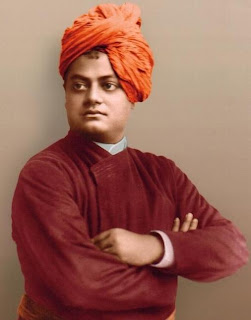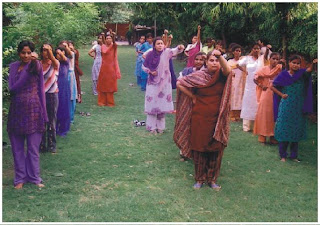Indian Women

According to Indian Mythology, the woman represents ‘Shakti’. Our goddesses destroy all evil and ensure that justice is done. Saraswati is the goddess of education and wisdom. Laxmi, is the goddess of wealth and prosperity and Kali, is the destroyer of evil. Ironically, Indian women are not allowed to educate themselves and be financially independent. They also become victims of crime. Our religious texts accord equal rights to women. However, the perpetrators of patriarchy misinterpret these very texts to subjugate women.
In most Indian states, especially in the rural areas, when a girl child is born, there is mourning on a large scale. Female feticide and infanticide are major social problems in
The plight of the urbanized Indian woman is of a different kind. She is expected to have academic and professional qualifications. She is trained to be reasonable and rational, yet her life is an anti-thesis of rationality. Despite the fact that she is trained to be independent, she is forced to conform to the gender codes for purposes of social acceptance. She is expected to be the jack-of-all-trades, with recognized qualifications, a good job and excellent communication skills. Apart from this, an urbanized Indian woman should also have a good family background, a nymph like frame, clear complexion, wrinkle and pimple free face and silky-dandruff free hair. She becomes a victim of fashion. Besides, she knows that she has to be perfect by the age of twenty-four, because, without the aforementioned qualities, she cannot expect to get an Indian man. The poor thing knows that she is going to be an obsolete product in the Indian marriage market by the age of thirty, which is ordinarily, her expiry date.
Woman is treated like an inanimate object in our society. She is displayed in the marriage market and is purchased by the groom’s family. Ironically, she is the one who pays the price, in the form of dowry. Despite her education she is forced to accept the unreasonable demands of her prospect bridegroom’s family. She has to love her mother-law, more than her man. And mum-in-law always forgets that she herself is a woman and inevitably assumes the role of a slave-driver. She rants and curses all the time. If she fails to balance her personal and professional life, she is expected to forget her professional life, altogether. Her desire to succeed and attain self-fulfillment is of no consequence to anyone. So, she has to manage her house, be a good mother, wife and daughter-in-law, look beautiful and also earn a living.
There are a large number of women in our society who are single. A spinster is tortured all her life for not finding the right man. It is believed that a widowed woman brings bad luck to the people she associates with and the social stigma attached to the term ‘divorcee’ is far from gone. Single women are seen as threats to the society by the so-called happily married women.
An Indian woman spends her whole life, looking after other people. She rarely gets the time to think about her own health. A woman’s body needs special care during teenage, pregnancy and after child birth. If she is callous about her health during these stages, she suffers from many diseases and ailments, later on in life.
The crime against women is also on the high. Over 32000 murders, 19,000 rapes, 7500 dowry deaths and 36500 molestation cases are the violent crimes reported in
Indian women can rightfully be called Superwomen. They are expected to be experts at multi-tasking. They are trained to be ideal daughters, sisters, wives, daughters-in-law and later, useful and adaptable mothers, mothers-in-law and grandmothers. They hardly get the time to thing about their own well being and health and when they fall ill and fail to be ‘useful’, they are abandoned. It seems that their existence on earth has only one purpose and that is, to satisfy the needs of others. The critics of my articles would contend that Indian women are now free. They have the right to lead their lives the way they want to, with the full support of their families. These are unfortunately, the ‘fortunate few’. It is very convenient to be idealistic. The truth is, women in
References:
1) http://www.azadindia.org/social-issues/crime-against-women-in-india.html
2) http://www.indianetzone.com/2/women_freedom_struggle.htm


Comments
Post a Comment